The Milwaukee Hurling Club and the North American Gaelic Athletic Association
The Milwaukee Hurling Club attempts to develop American players unlike some of the clubs in Chicago and Atlanta which bring in players from Ireland . The club is funded by the players and sponsors. While the MHC plays games among the 11 teams within the club there are travelling teams which compete in North American Gaelic Athletic Association (NAGAA) tournaments. Specifically, there have been two men's and a women's (Camogie) travelling teams. The traveling teams are made up of players who also play on the coed club teams. In 2007, the Milwaukee Men's Junior B travelling team captured its first NAGAA Championship. In 2008, The Milwaukee Men's Junior B travelling team repeated as NAGAA Champions and will move up to Junior A in 2009.
Due to the success of promoting the sport of hurling the club administrator, Dave Olson, was honored by the GAA in Ireland with the President's Award [usurped] . This was the first time ever that an American had been recognized with such an honor.
As the MHC has grown and become more organized it has been more involved with the NAGAA but has still maintained an independent status. The separation specifically allows for coed teams which is not allowed on official NAGAA teams. The mixed teams is generally the only difference as the MHC follows rule changes made annually by the GAA in Ireland.
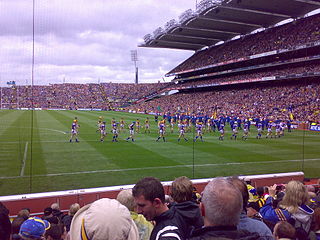
Hurling is an outdoor team game of ancient Gaelic Irish origin, played by men and women. One of Ireland's native Gaelic games, it shares a number of features with Gaelic football, such as the field and goals, the number of players and much terminology. The same game played by women is called camogie, which shares a common Gaelic root.
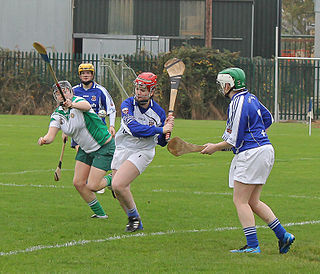
Camogie is an Irish stick-and-ball team sport played by women. Camogie is played by 100,000 women in Ireland and worldwide, largely among Irish communities.

The Gaelic Athletic Association is an Irish international amateur sporting and cultural organisation, focused primarily on promoting indigenous Gaelic games and pastimes, which include the traditional Irish sports of hurling, camogie, Gaelic football, Gaelic handball, and rounders. The association also promotes Irish music and dance, as well as the Irish language and it also promotes environmental stewardship through its Green Clubs initiative.

Gaelic games are a set of sports played worldwide, though they are particularly popular in Ireland, where they originated. They include Gaelic football, hurling, Gaelic handball and rounders. Football and hurling, the most popular of the sports, are both organised by the Gaelic Athletic Association (GAA). Women's versions of hurling and football are also played: camogie, organised by the Camogie Association of Ireland, and ladies' Gaelic football, organised by the Ladies' Gaelic Football Association. While women's versions are not organised by the GAA, they are closely associated with it but are still separate organisations.

The Derry County Board of the Gaelic Athletic Association (GAA) or Derry GAA is one of the 32 county boards of the GAA in Ireland. It is responsible for Gaelic games in County Londonderry in Northern Ireland. The county board is also responsible for the Derry county teams.

The Limerick County Board of the Gaelic Athletic Association (GAA) or Limerick GAA is one of the 32 county boards of the GAA in Ireland, and is responsible for Gaelic games in County Limerick. The county board is also responsible for the Limerick county teams.

The Down County Board or Down GAA is one of the 32 county boards of the Gaelic Athletic Association (GAA) in Ireland, and is responsible for the administration of Gaelic games in County Down,.

The United States County Board of the Gaelic Athletic Association or USGAA, is one of the 3 county boards of the Gaelic Athletic Association (GAA) in North America, and is responsible for Gaelic games in the United States. The county board is also responsible for the United States county teams.
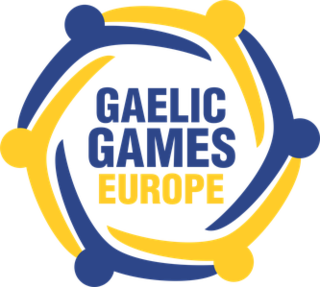
The European Board of the Gaelic Athletic Association or Gaelic Games Europe is one of the international units of the Gaelic Athletic Association (GAA), and is responsible for organising Gaelic games in continental Europe. Gaelic Games Europe is also responsible for the European Gaelic football, hurling, camogie and ladies' Gaelic football teams which compete every three years at the GAA World Gaelic Games.
The St. Louis Gaelic Athletic Club (STLGAC) is an amateur Irish and international cultural and sporting club primarily focused on promoting Gaelic games in the St. Louis, Missouri metro area. The club was founded as the St. Louis Hurling Club, but changed its name to better reflect the club's participation in its two main sports; hurling and Gaelic football.
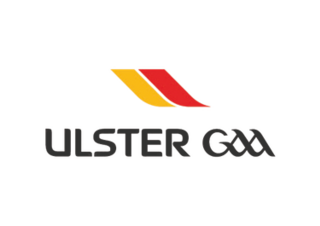
The Ulster Council is a provincial council of the Gaelic Athletic Association sports of hurling, Gaelic football, camogie, and handball in the province of Ulster. The headquarters of the Ulster GAA is based in the city of Armagh.
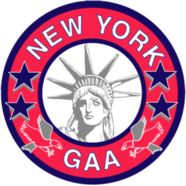
The New York County Board of the Gaelic Athletic Association, or New York GAA is one of the three county boards of the Gaelic Athletic Association (GAA) in North America, and is responsible for Gaelic games in the New York metropolitan area. The county board is also responsible for the New York county teams.
St Laurence's GAA is a Gaelic Athletic Association club in south County Kildare, Ireland.
The Montreal Shamrocks GAC is a sports club in Montreal, Canada, associated with the Gaelic Athletic Association in Ireland. The club operates under the Canadian GAA board in the Eastern Canada division.
Although many hurling clubs exist worldwide, only Ireland has a national team. Ireland's national hurling team and the Scotland shinty team have played for many years with modified match rules in international composite rules—much like international rules football brings together Gaelic football and Australian rules football. This match is the only such international competition.
The following is an alphabetical list of terms and jargon used in relation to Gaelic games. See also list of Irish county nicknames, and these are very interesting.
Elizabeth Howard is an Irish camogie player who was the 27th President of the Camogie Association.

The Camogie Association organises and promotes the sport of camogie in Ireland and around the world. The association has close ties with the Gaelic Athletic Association, but is still a separate organisation.

Portobello GAA is a Gaelic Athletic Association club based in the Rathmines area of the south side of Dublin in Ireland. The club has adult men's football, hurling, camogie, ladies' Gaelic football and handball teams.

The New Hampshire Wolves Hurling Club, also called the Barley House Wolves, is an American hurling club based in New Hampshire. The team was founded in 2006 by New Hampshire Army National Guard soldiers from Charlie Company, 3rd Battalion of the 172nd Mountain Infantry. They are New Hampshire's first hurling club consisting solely of American-born players, as opposed to clubs formed with Irish or other expatriates. The club competes at Junior C and Junior B levels.














